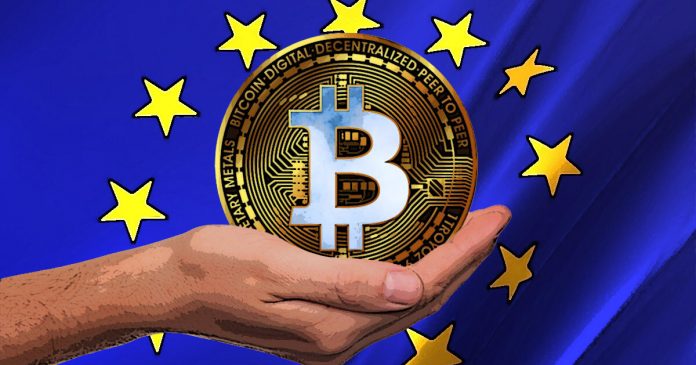
European Securities and Markets Authority is concerned over the risks bitcoin mining poses to meeting climate change goals under the Paris agreement.
Erik Thedéen, the vice-chair of the watchdog, told the Financial Times in an interview that there has been a significant rise in the amount of renewable energy dedicated to crypto mining. He added that mining has become a “national issue” for his home country Sweden.
Thedéen also said that he is not advocating to ban crypto in general but recommending a ban on proof-of-work mining move the industry toward the proof-of-stake model, which consumes less energy overall.
Mining has become a huge business over the last decade and shows no sign of slowing down. Computing power dedicated to the industry reached record levels at the end of 2021, despite a wholesale ban on mining and crypto in China which was one of the biggest crypto markets in the world.
Proof-of-work vs. Proof-of-stake
Proof-of-work is the process through which a blockchain verifies blocks, or transactions, as being legitimate. Miners dedicate computing power to compete against each other to solve complex problems in order to verify transactions. In return, they are rewarded with coins.
The Proof-of-work model requires every participant on the blockchain to verify transactions, which ultimately costs a vast amount of energy.
On the other hand, the proof-of-stake model allows transactions to be verified by a significantly smaller number of parties. Participants stake their own crypto to generate validating nodes which then verify transactions.
The debate
Both consensus mechanisms, as they are known officially, have proven to be successful. However, there are trade-offs associated with each side.
POW costs a massive amount of energy and equipment to run but this also imbues the system with higher levels of security since a rogue element would have to dedicate enormous amounts of resources to gain 51% control of the entire network. The downside is that scaling the network is costly as the energy and equipment requirements go up over time.
POS networks are maintained by coins or tokens as validators and are quickly scalable as they do not have the prerequisite of equipment and energy. However, the downside is that network control can be purchased. All it takes to attack the network is money.
CryptoSlate Newsletter
Featuring a summary of the most important daily stories in the world of crypto, DeFi, NFTs and more.
Get an edge on the cryptoasset market
Access more crypto insights and context in every article as a paid member of CryptoSlate Edge.
On-chain analysis
Price snapshots
More context
Join now for $19/month Explore all benefits
Credit: Source link






















 Bitcoin
Bitcoin  Ethereum
Ethereum  Tether
Tether  Solana
Solana  USDC
USDC  Lido Staked Ether
Lido Staked Ether  XRP
XRP  Dogecoin
Dogecoin  Toncoin
Toncoin  Cardano
Cardano  Shiba Inu
Shiba Inu  Avalanche
Avalanche  TRON
TRON  Polkadot
Polkadot  Wrapped Bitcoin
Wrapped Bitcoin  Bitcoin Cash
Bitcoin Cash  Chainlink
Chainlink  NEAR Protocol
NEAR Protocol  Polygon
Polygon  Internet Computer
Internet Computer  Fetch.ai
Fetch.ai  Litecoin
Litecoin  Uniswap
Uniswap  Dai
Dai  LEO Token
LEO Token  Hedera
Hedera  Ethereum Classic
Ethereum Classic  Aptos
Aptos  Render
Render  First Digital USD
First Digital USD  Cosmos Hub
Cosmos Hub  Pepe
Pepe  Cronos
Cronos  Mantle
Mantle  Filecoin
Filecoin  Stacks
Stacks  dogwifhat
dogwifhat  Immutable
Immutable  Stellar
Stellar  Wrapped eETH
Wrapped eETH  XT.com
XT.com  Bittensor
Bittensor  Renzo Restaked ETH
Renzo Restaked ETH  Optimism
Optimism  OKB
OKB  Arbitrum
Arbitrum  The Graph
The Graph  Maker
Maker 
